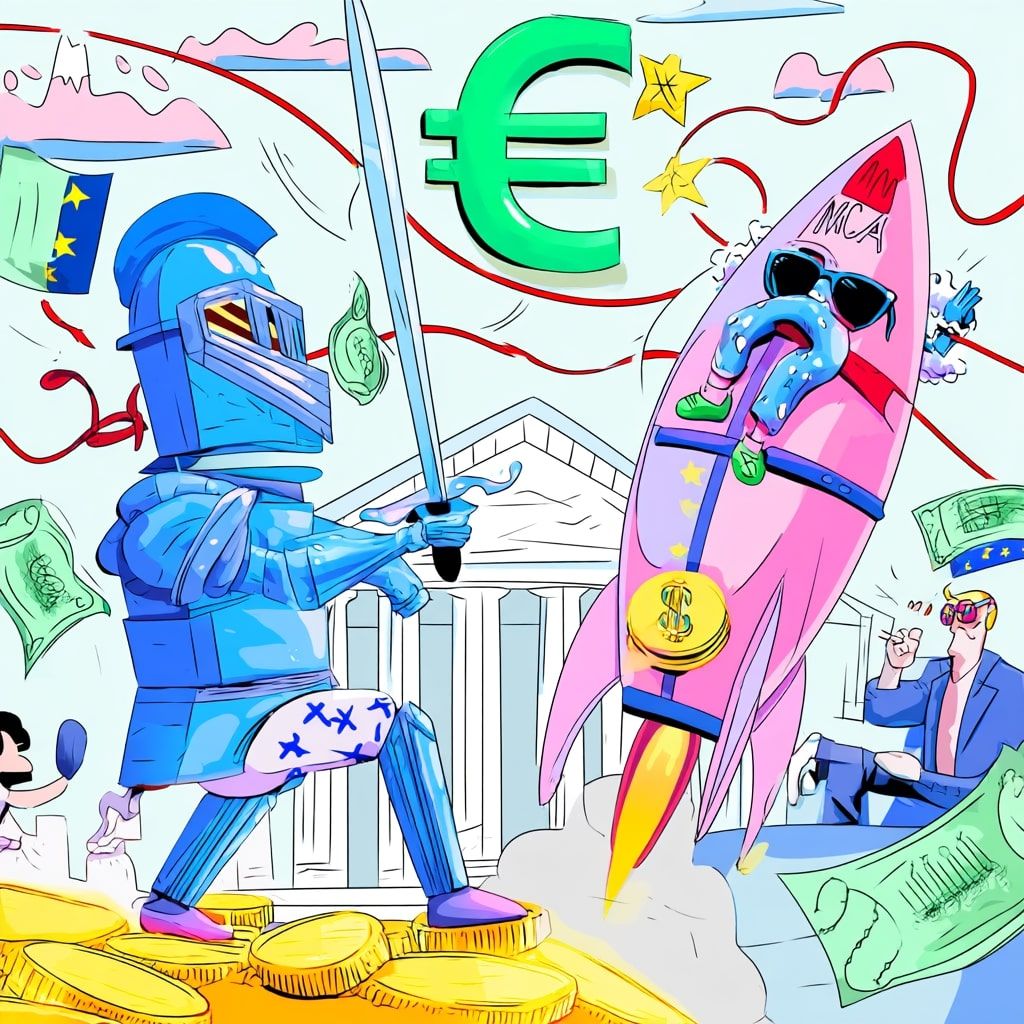EU Crypto Rules May Boost Dollar Instead of Euro, Warns Stablecoin Founder
EU Stablecoin Rules Might Backfire — Here’s How They’re Boosting the U.S. Dollar Instead
Europe wanted to challenge dollar dominance. It might’ve just made it worse.
💶 MiCA: Europe’s Big Crypto Bet
The European Union rolled out MiCA, a sweeping regulatory framework for crypto, with one clear goal:
Make the euro matter in the global digital economy.
But according to Eneko Knörr, founder of euro stablecoin project Stabolut, the whole thing might be having the opposite effect.
“Private euro stablecoins are basically unviable under MiCA,” he says.
“The result? Dollar-backed stablecoins keep winning.”
📊 The Harsh Reality: Dollar Still King
Let’s look at the scoreboard:
- Dollar-backed stablecoins (like USDT, USDC): Over 99% of the global stablecoin market.
- Euro stablecoins: Strangled by rules before they can grow.
MiCA’s strict requirements — capital reserves, licensing, constant oversight — make it nearly impossible for smaller euro-backed stablecoins to compete. So where do users go?
Right back to US-based tokens.
Instead of de-dollarizing, MiCA might just be cementing dollar dominance in the crypto space.
🏦 Enter the ECB: Digital Euro to the Rescue?
The European Central Bank isn’t sitting this one out. It’s fast-tracking the digital euro, a CBDC (central bank digital currency) designed to:
- Modernize European payments
- Reduce dependence on Visa, Mastercard, and Alipay
- Reclaim financial sovereignty
Christine Lagarde, ECB President, says this could add trillions to the EU’s GDP by 2032.
But not everyone’s buying it.
🧠 Critics Aren’t Convinced
Eneko Knörr — and plenty of others in crypto — think a government-run digital euro might not deliver the innovation users actually want.
Their concerns:
- Privacy risks under centralized digital control
- Lack of flexibility vs. private stablecoin projects
- Innovation bottlenecks caused by bureaucracy
“Government projects rarely outperform private ones,” Knörr says.
“Especially when it comes to speed, trust, and user adoption.”
Even Tether CEO Paolo Ardoino weighed in, warning MiCA could hurt not just crypto, but also traditional banks, by over-regulating the whole system.
🧩 So What’s the Big Picture?
The EU is trying to balance two things:
- Regulate crypto responsibly
- Promote European financial independence
But the current approach might be pushing users away from the euro, not toward it — especially in Web3, where flexibility and decentralization are king.
And with the digital euro launch planned for October 2025, time is running out to fix the disconnect.
🧠 TL;DR:
- EU’s MiCA rules aim to boost the euro in crypto — but may be helping dollar-backed stablecoins dominate instead.
- Eneko Knörr says the regs are too strict for private euro stablecoins to survive.
- The ECB is betting on a digital euro, but critics fear it’s too centralized, too slow, and lacks user trust.
- The end result? Europe’s push for financial sovereignty might accidentally reinforce the dollar’s grip on digital finance.

Recent News
All Time High • Live
Have questions or want to collaborate? Reach us at: info@ath.live









